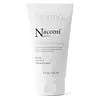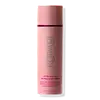What's inside
What's inside
 Key Ingredients
Key Ingredients

 Benefits
Benefits

 Concerns
Concerns

 Ingredients Side-by-side
Ingredients Side-by-side

Water
Skin ConditioningCetearyl Alcohol
EmollientPropanediol
SolventPersea Gratissima Oil
Skin ConditioningButyrospermum Parkii Butter
Skin ConditioningPrunus Amygdalus Dulcis Oil
Skin ConditioningCaprylic/Capric Triglyceride
MaskingCetyl Alcohol
EmollientCoco-Caprylate/Caprate
Emollient3-O-Ethyl Ascorbic Acid
Skin ConditioningRetinol
Skin ConditioningPhytosterols
Skin ConditioningOlea Europaea Fruit Oil
MaskingAscorbyl Palmitate
AntioxidantHyaluronic Acid
HumectantSodium Hyaluronate
HumectantHydrolyzed Hyaluronic Acid
HumectantSodium Hyaluronate Crosspolymer
HumectantEthylhexylglycerin
Skin ConditioningRaspberry Ketone
MaskingGlycerin
HumectantHydrolyzed Glycosaminoglycans
HumectantSorbitan Oleate
EmulsifyingTocopheryl Acetate
AntioxidantSodium Hydroxide
BufferingBenzyl Glycol
SolventTetrasodium Glutamate Diacetate
Citric Acid
BufferingPotassium Cetyl Phosphate
EmulsifyingParfum
MaskingPolysorbate 20
EmulsifyingDehydroacetic Acid
PreservativeBenzyl Alcohol
PerfumingWater, Cetearyl Alcohol, Propanediol, Persea Gratissima Oil, Butyrospermum Parkii Butter, Prunus Amygdalus Dulcis Oil, Caprylic/Capric Triglyceride, Cetyl Alcohol, Coco-Caprylate/Caprate, 3-O-Ethyl Ascorbic Acid, Retinol, Phytosterols, Olea Europaea Fruit Oil, Ascorbyl Palmitate, Hyaluronic Acid, Sodium Hyaluronate, Hydrolyzed Hyaluronic Acid, Sodium Hyaluronate Crosspolymer, Ethylhexylglycerin, Raspberry Ketone, Glycerin, Hydrolyzed Glycosaminoglycans, Sorbitan Oleate, Tocopheryl Acetate, Sodium Hydroxide, Benzyl Glycol, Tetrasodium Glutamate Diacetate, Citric Acid, Potassium Cetyl Phosphate, Parfum, Polysorbate 20, Dehydroacetic Acid, Benzyl Alcohol
Water
Skin ConditioningIsopropyl Myristate
EmollientGlycerin
HumectantGlyceryl Stearate
EmollientCetyl Alcohol
EmollientCetearyl Alcohol
EmollientRetinol
Skin ConditioningPunica Granatum Fruit Extract
AntioxidantEuterpe Oleracea Fruit Oil
Skin ConditioningTocopherol
AntioxidantHelianthus Annuus Seed Oil
EmollientGlycine Soja Oil
EmollientEthylhexylglycerin
Skin ConditioningSodium Stearoyl Lactylate
EmulsifyingPolyacrylate Crosspolymer-6
Emulsion StabilisingTetrasodium Glutamate Diacetate
Aminobutyric Acid
Propanediol
SolventCetyl Palmitate
EmollientLauryl Glucoside
CleansingSorbitan Stearate
EmulsifyingHydrogenated Lecithin
EmulsifyingCaprylyl Glycol
EmollientPhenoxyethanol
PreservativeCitric Acid
BufferingT-Butyl Alcohol
PerfumingSodium Hydroxide
BufferingWater, Isopropyl Myristate, Glycerin, Glyceryl Stearate, Cetyl Alcohol, Cetearyl Alcohol, Retinol, Punica Granatum Fruit Extract, Euterpe Oleracea Fruit Oil, Tocopherol, Helianthus Annuus Seed Oil, Glycine Soja Oil, Ethylhexylglycerin, Sodium Stearoyl Lactylate, Polyacrylate Crosspolymer-6, Tetrasodium Glutamate Diacetate, Aminobutyric Acid, Propanediol, Cetyl Palmitate, Lauryl Glucoside, Sorbitan Stearate, Hydrogenated Lecithin, Caprylyl Glycol, Phenoxyethanol, Citric Acid, T-Butyl Alcohol, Sodium Hydroxide
Ingredients Explained
These ingredients are found in both products.
Ingredients higher up in an ingredient list are typically present in a larger amount.
Cetearyl alcohol is a mixture of two fatty alcohols: cetyl alcohol and stearyl alcohol. It is mainly used as an emulsifier. Emulsifiers help prevent the separation of oils and products. Due to its composition, it can also be used to thicken a product or help create foam.
Cetearyl alcohol is an emollient. Emollients help soothe and hydrate the skin by trapping moisture.
Studies show Cetearyl alcohol is non-toxic and non-irritating. The FDA allows products labeled "alcohol-free" to have fatty alcohols.
This ingredient is usually derived from plant oils such as palm, vegetable, or coconut oils. There is debate on whether this ingredient will cause acne.
Due to the fatty acid base, this ingredient may not be Malassezia folliculitis safe.
Learn more about Cetearyl AlcoholCetyl Alcohol is a fatty alcohol. Fatty Alcohols are most often used as an emollient or to thicken a product.
Its main roles are:
Though it has "alcohol" in the name, it is not related to denatured alcohol or ethyl alcohol.
The FDA allows products labeled "alcohol-free" to have fatty alcohols.
Learn more about Cetyl AlcoholCitric Acid is an alpha hydroxy acid (AHA) naturally found in citrus fruits like oranges, lemons, and limes.
Like other AHAs, citric acid can exfoliate skin by breaking down the bonds that hold dead skin cells together. This helps reveal smoother and brighter skin underneath.
However, this exfoliating effect only happens at high concentrations (20%) which can be hard to find in cosmetic products.
Due to this, citric acid is usually included in small amounts as a pH adjuster. This helps keep products slightly more acidic and compatible with skin's natural pH.
In skincare formulas, citric acid can:
While it can provide some skin benefits, research shows lactic acid and glycolic acid are generally more effective and less irritating exfoliants.
Most citric acid used in skincare today is made by fermenting sugars (usually from molasses). This synthetic version is identical to the natural citrus form but easier to stabilize and use in formulations.
Read more about some other popular AHA's here:
Learn more about Citric AcidEthylhexylglycerin (we can't pronounce this either) is commonly used as a preservative and skin softener. It is derived from glyceryl.
You might see Ethylhexylglycerin often paired with other preservatives such as phenoxyethanol. Ethylhexylglycerin has been found to increase the effectiveness of these other preservatives.
Glycerin is already naturally found in your skin. It helps moisturize and protect your skin.
A study from 2016 found glycerin to be more effective as a humectant than AHAs and hyaluronic acid.
As a humectant, it helps the skin stay hydrated by pulling moisture to your skin. The low molecular weight of glycerin allows it to pull moisture into the deeper layers of your skin.
Hydrated skin improves your skin barrier; Your skin barrier helps protect against irritants and bacteria.
Glycerin has also been found to have antimicrobial and antiviral properties. Due to these properties, glycerin is often used in wound and burn treatments.
In cosmetics, glycerin is usually derived from plants such as soybean or palm. However, it can also be sourced from animals, such as tallow or animal fat.
This ingredient is organic, colorless, odorless, and non-toxic.
Glycerin is the name for this ingredient in American English. British English uses Glycerol/Glycerine.
Learn more about GlycerinPropanediol is an all-star ingredient. It softens, hydrates, and smooths the skin.
It’s often used to:
Propanediol is not likely to cause sensitivity and considered safe to use. It is derived from corn or petroleum with a clear color and no scent.
Learn more about PropanediolRetinol is a gold-standard ingredient for anti-aging. It is a form of Vitamin A and belongs to the class of retinoids that also includes tretinoin.
Why is retinol famous?
It has the most scientific studies backing up its skin benefits out of all the non-prescription ingredients.
Retinol is proven to:
This is why retinol is effective at removing wrinkles, fading dark spots, treating acne, and reducing the appearance of pores.
Studies show retinol is less effective when exposed to UV. Be sure to look for appropriate packaging to keep your retinol potent (similar to Vitamin C).
Using retinol or any retinoids will increase sun-sensitivity in the first few months. Though studies show retinoids increase your skin's natural SPF with continuous use, it is best to always wear sunscreen and sun-protection.
We recommend speaking with a medical professional about using this ingredient during pregnancy.
Retinol may cause irritation in some people, so be sure to patch test. Experts recommend 'ramping up' retinol use: start using this ingredient once a week and work up to using it daily.
Read about Tretinoin
Learn more about RetinolSodium Hydroxide is also known as lye or caustic soda. It is used to adjust the pH of products; many ingredients require a specific pH to be effective.
In small amounts, sodium hydroxide is considered safe to use. However, large amounts may cause chemical burns due to its high alkaline.
Your skin has a natural pH and acid mantle. This acid mantle helps prevent harmful bacteria from breaking through. The acid mantle also helps keep your skin hydrated.
"Alkaline" refers to a high pH level. A low pH level would be considered acidic.
Learn more about Sodium HydroxideTetrasodium Glutamate Diacetate is a chelating agent. Chelating agents help prevent metal ions from binding to other ingredients. This helps prevent unwanted effects and reactions from a product. These metal ions may come from water and are found in miniscule amounts.
Tetrasodium Glutamate Diacetate can also help other preservatives be more effective.
Water. It's the most common cosmetic ingredient of all. You'll usually see it at the top of ingredient lists, meaning that it makes up the largest part of the product.
So why is it so popular? Water most often acts as a solvent - this means that it helps dissolve other ingredients into the formulation.
You'll also recognize water as that liquid we all need to stay alive. If you see this, drink a glass of water. Stay hydrated!
Learn more about Water